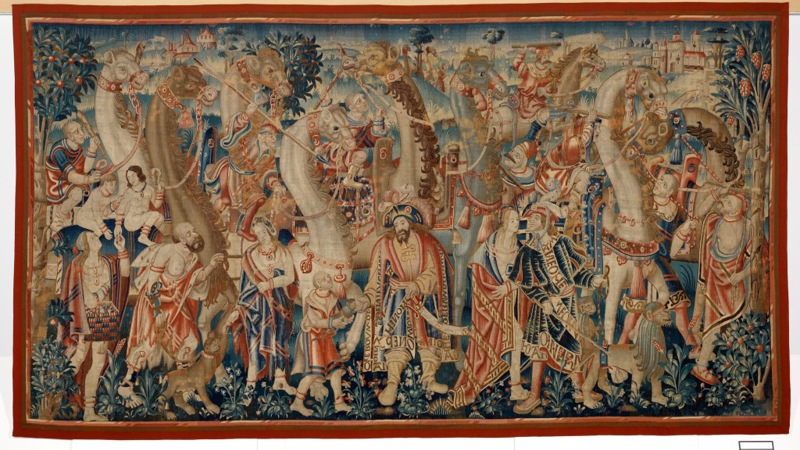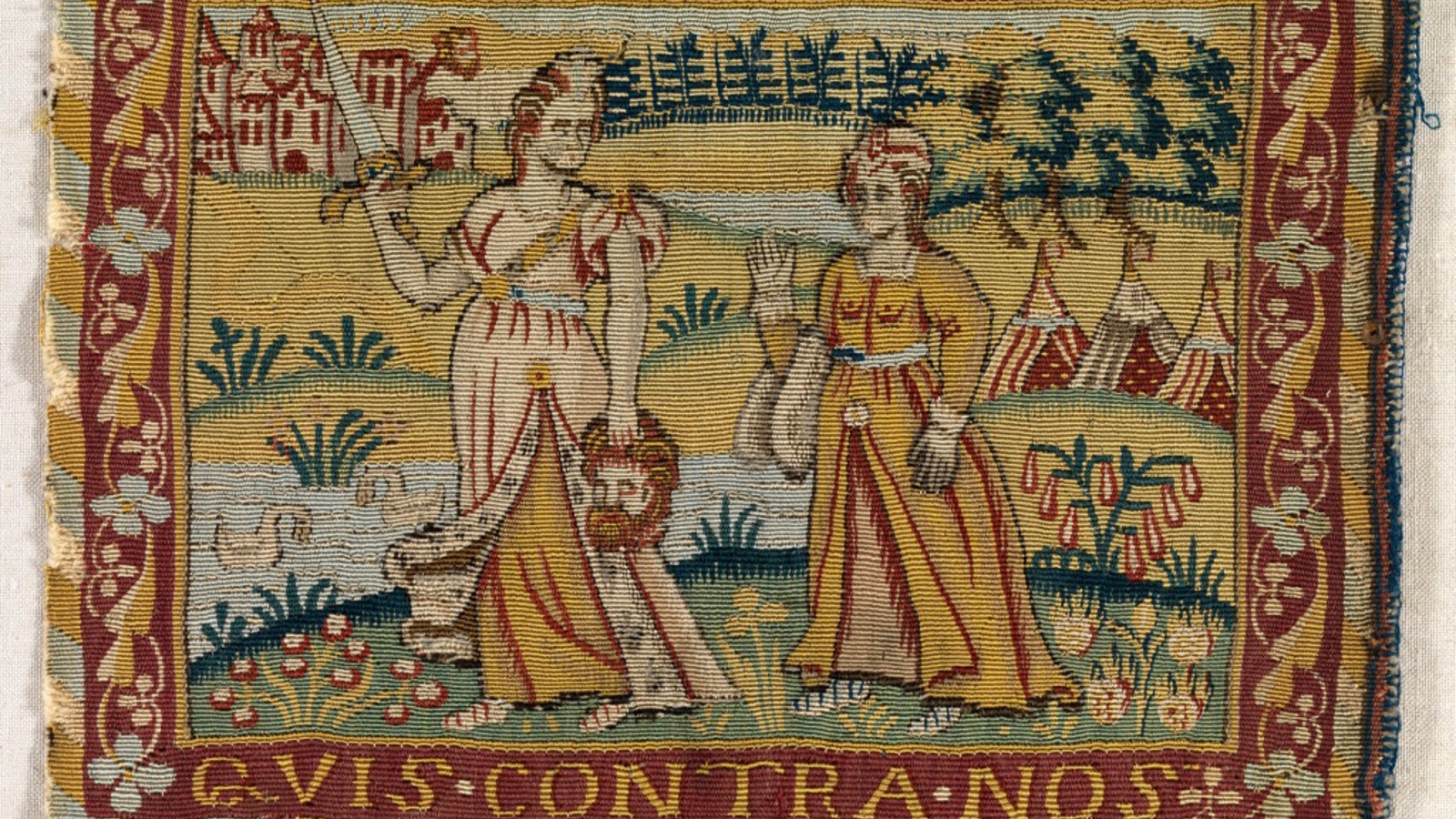Voyages of Exploration and Exploitation

Exploration of the Indies: The Camel Caravan, about 1500–30. Woven perhaps in the workshop of Arnould Poissonnier, Tournai, Southern Netherlands, now Belgium.
Burrell Collection 46.94
Images © CSG CIC Glasgow Museums Collection
15th July 2020
This stunning tapestry in the Burrell Collection with its long-necked camels allows us to take a long view and look at the origins of the transatlantic slave trade. Woven in about 1500–30 probably in the workshop of Arnould Poissonnier in Tournai, Southern Netherlands, now Belgium, this tapestry is one of a group known collectively as the Voyage to Calicut. Each panel showed a scene from the journeys around the coast of Africa to Kozhikode (anglicized as Calicut) on the west coast of India by the Portuguese explorer, Vasco da Gama, in 1497–99 and 1502–03.
These are often taught in schools as voyages of discovery and celebrated as a part of a golden age of European exploration; however, they also mark the beginnings of European exploitation of people from sub-Saharan African countries in the Caribbean and Americas. In this case da Gama’s expeditions were not only aiming to find a new sea route for trade with the Indian subcontinent, but also to establish new Portuguese trading posts by which to buy and sell various goods, including enslaved Africans. During the 1497–99 voyage da Gama stopped at the Cape of Good Hope and Natal in what is now South Africa, Mombasa on the Kenyan coast and Goa before arriving in Kozhikode.
The first public sale of enslaved Africans in Portugal had been held in Lagos in 1444 as a result of a raid by Lançarote de Freitas under licence from the Infante D. Henrique of Portugul, known as Prince Henry the Navigator. 235 Berbers were captured, kidnapped and enslaved from Nar, Tider and Cerina in the Bay of Arguin, now in Mauritania. Eleven years later in 1455 Pope Nicholas V granted King Afonso V of Portugal a papal bull known as the Romanus Pontifex allowing the Portuguese the right to continue trading in enslaved Africans provided they were converted to Christianity. As the trade expanded the Portuguese started building their first permanent slave trading post in 1482 at Elmina, now in Ghana.

These enslaved Africans were initially used on Portuguese sugar plantations on islands off the west coast of Africa, including Madeira from 1452 and Cape Verde in 1462. While the transatlantic slave trade was started by the Spanish in 1502, the Portuguese were soon after spurred on by Pedro Álvares Cabral’s claim on Brazil in May 1500. Brazil was officially colonized in 1534 with plantations established that were worked by enslaved Africans, mainly from what is now Angola and Mozambique. The largest export was sugar, but another major trade good was brazilwood (Paubrasilia echinata), native to Brazil, Paraguay and Argentina and as a result of European exploitation now classified as endangered. Brazilwood is prized both for its wood but also as a source of natural red dye used to create shades from orange to purple. This resulted in its mass exportation to Europe from the mid-1500s onwards for use in dying yarns used to make luxurious Renaissance textiles such as velvets and tapestries, including a small tapestry panel of Judith with the Head of Holofernes and her Maid and other English tapestries in the Burrell Collection.
Rebecca Quinton,
Research Manager (Art)
